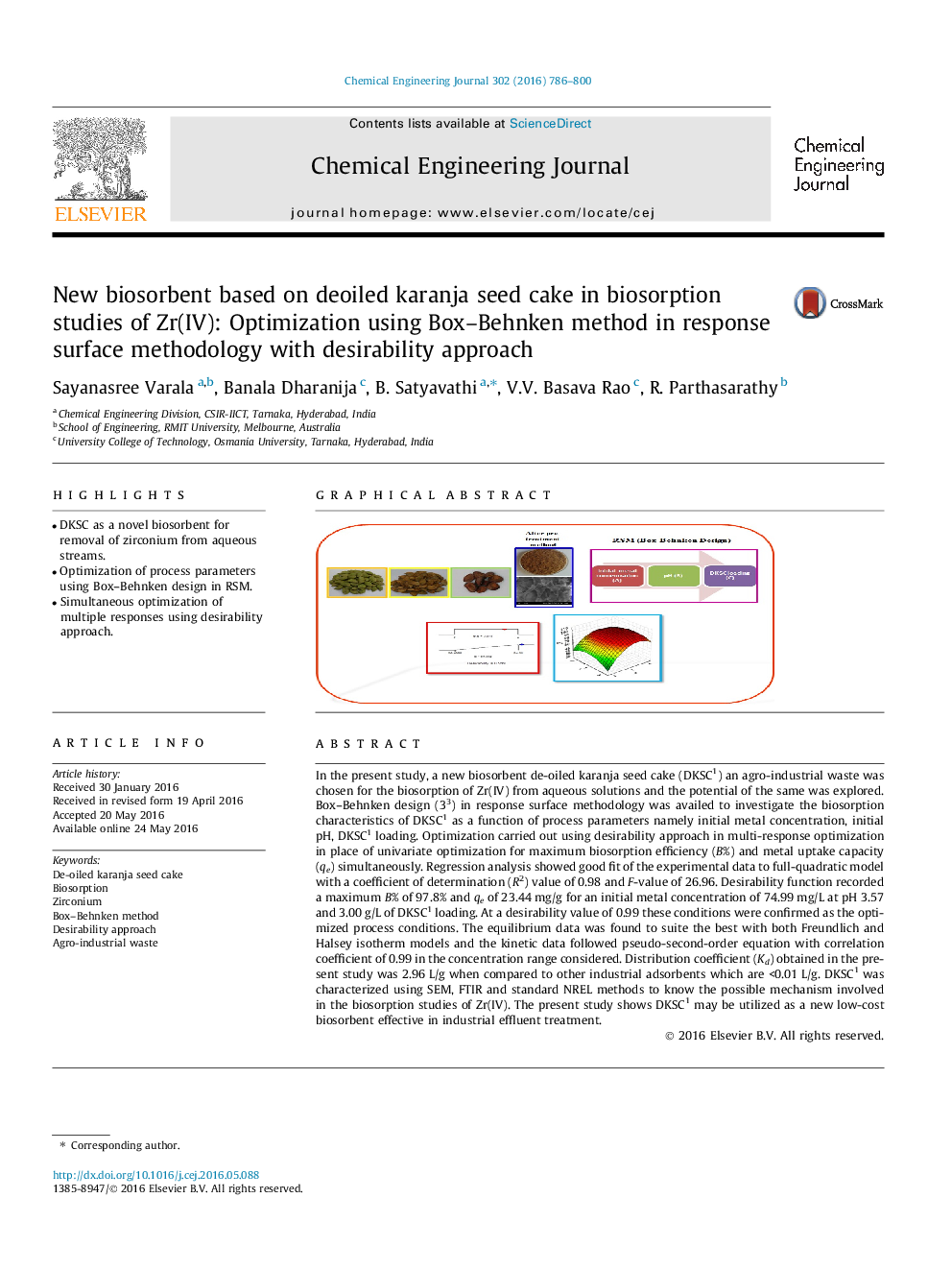| کد مقاله | کد نشریه | سال انتشار | مقاله انگلیسی | نسخه تمام متن |
|---|---|---|---|---|
| 145347 | 456338 | 2016 | 15 صفحه PDF | دانلود رایگان |

• DKSC as a novel biosorbent for removal of zirconium from aqueous streams.
• Optimization of process parameters using Box–Behnken design in RSM.
• Simultaneous optimization of multiple responses using desirability approach.
In the present study, a new biosorbent de-oiled karanja seed cake (DKSC1) an agro-industrial waste was chosen for the biosorption of Zr(IV) from aqueous solutions and the potential of the same was explored. Box–Behnken design (33) in response surface methodology was availed to investigate the biosorption characteristics of DKSC1 as a function of process parameters namely initial metal concentration, initial pH, DKSC1 loading. Optimization carried out using desirability approach in multi-response optimization in place of univariate optimization for maximum biosorption efficiency (B%) and metal uptake capacity (qe) simultaneously. Regression analysis showed good fit of the experimental data to full-quadratic model with a coefficient of determination (R2) value of 0.98 and F-value of 26.96. Desirability function recorded a maximum B% of 97.8% and qe of 23.44 mg/g for an initial metal concentration of 74.99 mg/L at pH 3.57 and 3.00 g/L of DKSC1 loading. At a desirability value of 0.99 these conditions were confirmed as the optimized process conditions. The equilibrium data was found to suite the best with both Freundlich and Halsey isotherm models and the kinetic data followed pseudo-second-order equation with correlation coefficient of 0.99 in the concentration range considered. Distribution coefficient (Kd) obtained in the present study was 2.96 L/g when compared to other industrial adsorbents which are <0.01 L/g. DKSC1 was characterized using SEM, FTIR and standard NREL methods to know the possible mechanism involved in the biosorption studies of Zr(IV). The present study shows DKSC1 may be utilized as a new low-cost biosorbent effective in industrial effluent treatment.
Figure optionsDownload as PowerPoint slide
Journal: Chemical Engineering Journal - Volume 302, 15 October 2016, Pages 786–800